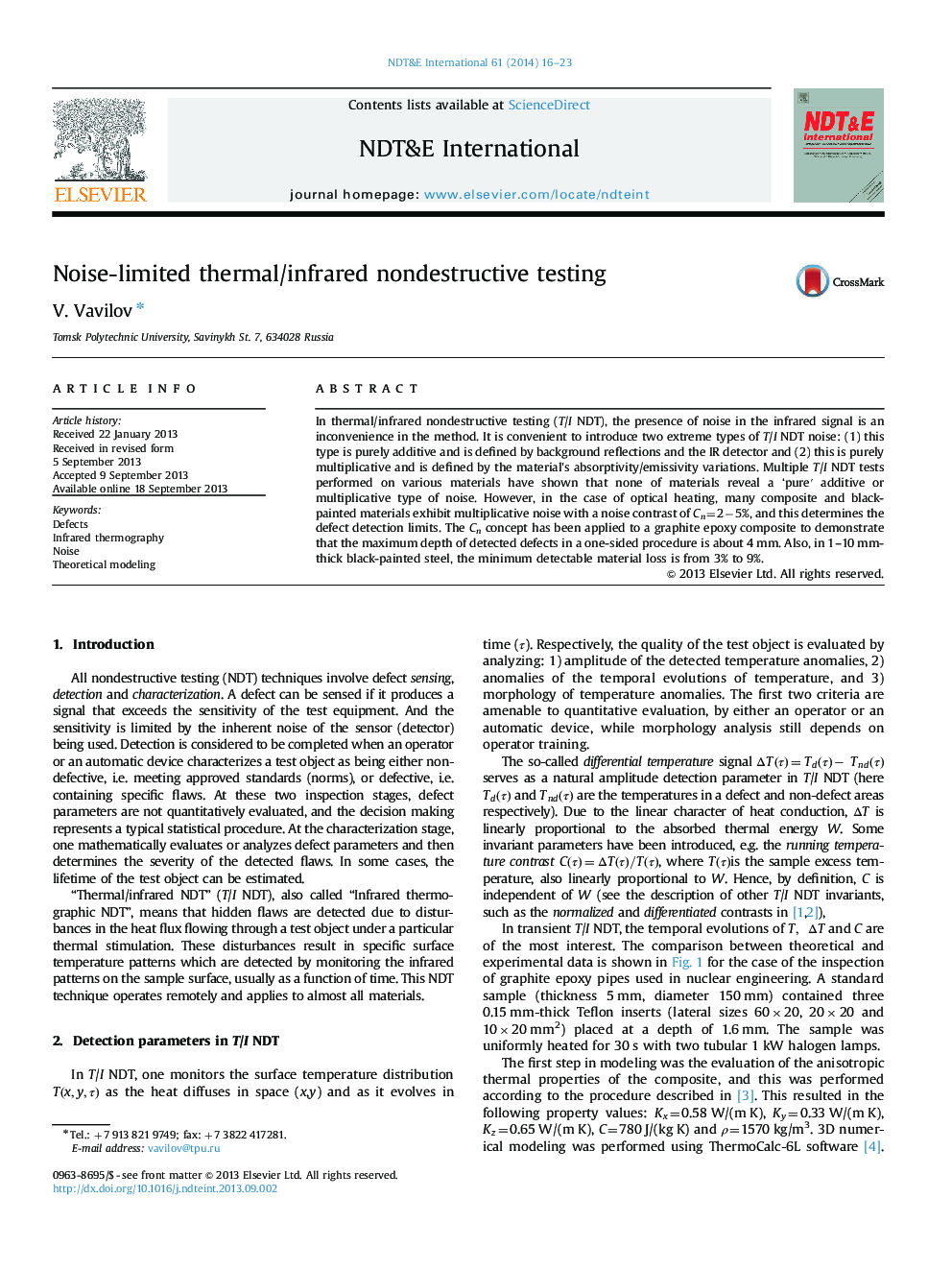| Article ID | Journal | Published Year | Pages | File Type |
|---|---|---|---|---|
| 295069 | NDT & E International | 2014 | 8 Pages |
•Detection limits may be determined by introducing noise parameters into numerical modeling.•The contribution of multiplicative and additive noise components to the inspection process is discussed.•The Thermal NDT signal noise emanating from a material being tested is evaluated.•The use of noise evaluation in the specific applications of Thermal NDT is discussed.
In thermal/infrared nondestructive testing (T/I NDT), the presence of noise in the infrared signal is an inconvenience in the method. It is convenient to introduce two extreme types of T/I NDT noise: (1) this type is purely additive and is defined by background reflections and the IR detector and (2) this is purely multiplicative and is defined by the material's absorptivity/emissivity variations. Multiple T/I NDT tests performed on various materials have shown that none of materials reveal a ‘pure′ additive or multiplicative type of noise. However, in the case of optical heating, many composite and black-painted materials exhibit multiplicative noise with a noise contrast of Cn=2−5%, and this determines the defect detection limits. The Cn concept has been applied to a graphite epoxy composite to demonstrate that the maximum depth of detected defects in a one-sided procedure is about 4 mm. Also, in 1–10 mm-thick black-painted steel, the minimum detectable material loss is from 3% to 9%.
